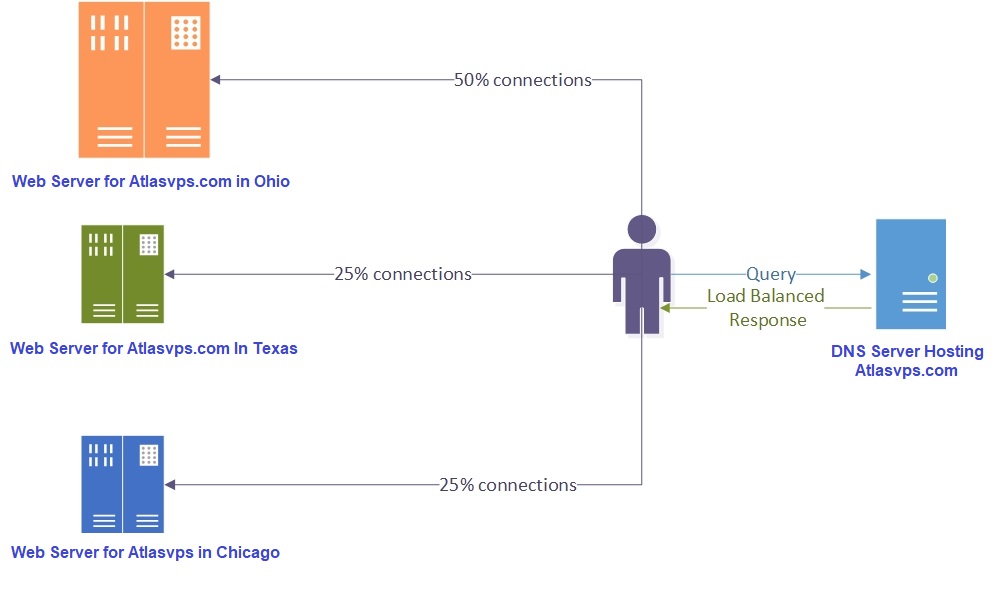How DNS load balancing works, and how it can benefit your website?

Certainly! DNS load balancing is a technique used to distribute incoming traffic across multiple servers to ensure efficient resource utilization and enhanced performance. It works by assigning multiple IP addresses to a single domain name, and when a user requests access to the website, the DNS server responds with the IP address of one of the available servers in a round-robin fashion or based on predefined algorithms.
- Improved Website Performance:
By distributing traffic across multiple servers, DNS load balancing reduces the load on individual servers, preventing bottlenecks and ensuring optimal performance. Users experience faster response times and smoother browsing, leading to a positive user experience. Load balancing helps your website handle increased traffic without slowing down or crashing, even during peak periods.
- High Availability:
DNS load balancing enhances the availability of your website. If one server becomes unavailable due to maintenance, hardware failure, or other issues, the load balancer automatically directs traffic to the remaining servers. This ensures that your website remains accessible and minimizes downtime, which is crucial for businesses that rely on continuous online presence.
- Scalability:
As your website grows and attracts more visitors, load balancing allows you to scale your infrastructure easily. By adding additional servers and configuring the load balancer accordingly, you can handle increased traffic volumes and accommodate resource requirements effectively. Load balancing enables seamless expansion and ensures that your website can handle traffic spikes without performance degradation.
- Redundancy and Fault Tolerance:
Load balancing provides redundancy and fault tolerance to your website infrastructure. If a server fails or experiences issues, the load balancer automatically detects the failure and redirects traffic to the remaining healthy servers. This redundancy ensures that your website remains operational and minimizes the impact of server failures on the user experience.
- Geographic Load Balancing:
With geographic load balancing, you can direct users to the closest server based on their physical location. By considering factors such as network latency and proximity, the load balancer routes traffic to the server that can provide the fastest response. This reduces latency, optimizes content delivery, and enhances the user experience, particularly for global websites with users spread across different regions.
- Cost Optimization:
DNS load balancing allows you to distribute traffic across multiple servers, enabling efficient resource utilization. By effectively utilizing the available server capacity, you can avoid overprovisioning and reduce infrastructure costs. Load balancing ensures that each server operates at an optimal load, minimizing the need for additional hardware and maximizing cost-efficiency.
- Flexibility and Control:
Load balancers offer various configuration options and algorithms, allowing you to customize how traffic is distributed. You can define rules and priorities based on server capacity, response times, or other factors. This flexibility grants you control over how traffic is managed and optimized, ensuring that the load balancing strategy aligns with your specific requirements.
In summary, DNS load balancing improves website performance, enhances availability, provides scalability, ensures fault tolerance, optimizes content delivery, reduces costs, and offers flexibility and control. By implementing DNS load balancing, you can create a robust and efficient infrastructure that can handle high traffic volumes, deliver a seamless user experience, and support your website's growth.





